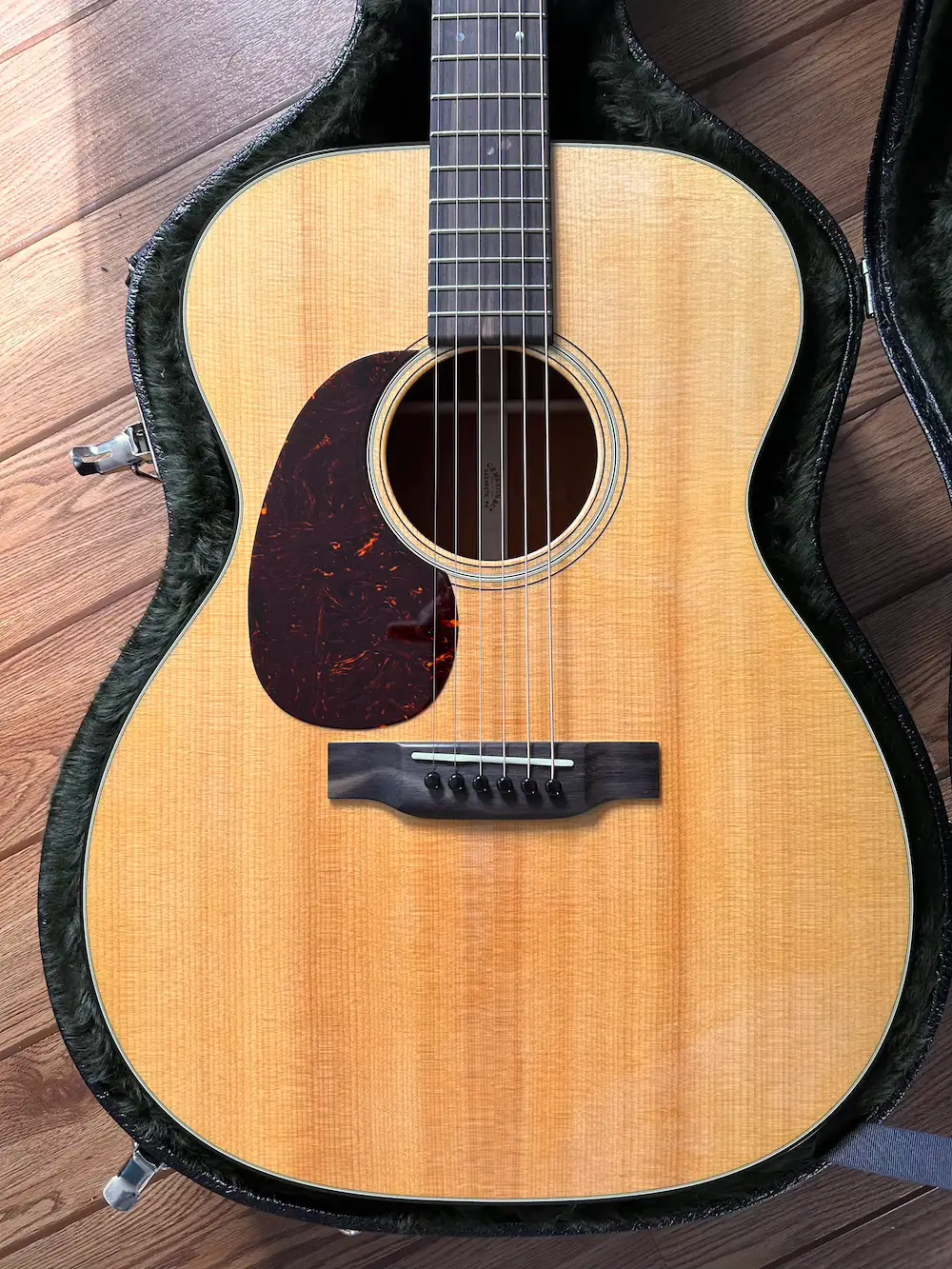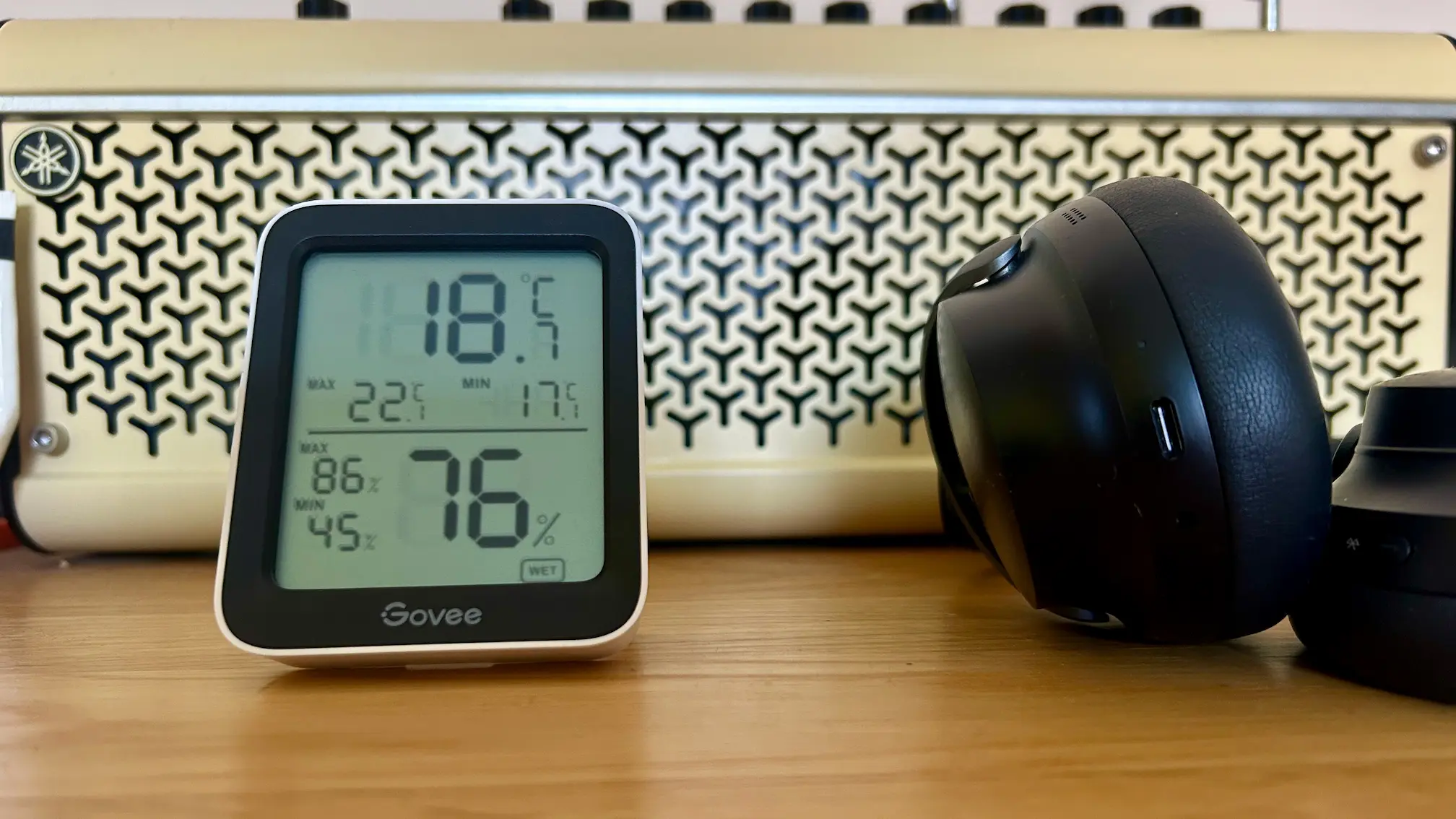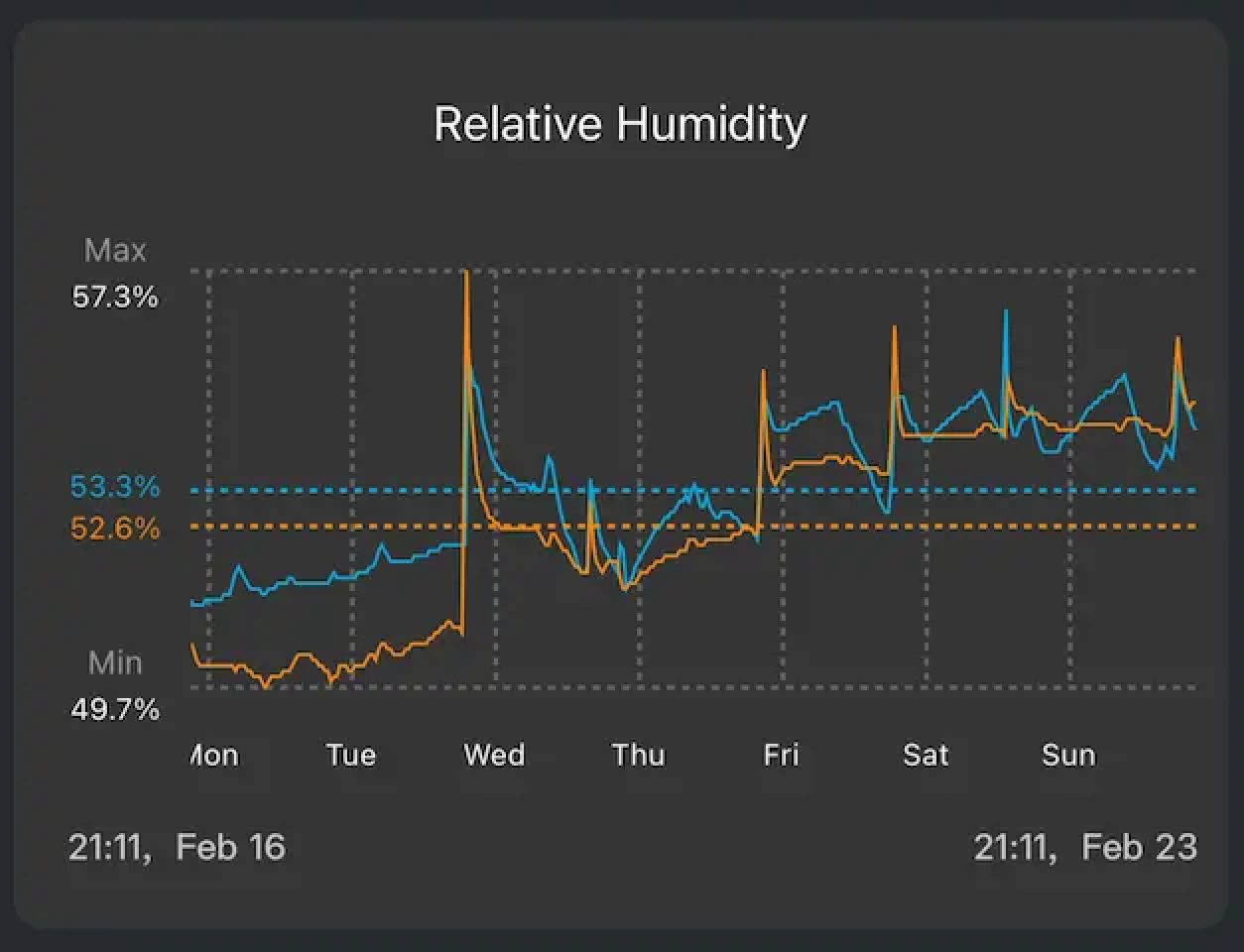A new plan for protecting my guitars from humidity
I have four guitars, two electric and two acoustic. All are special to me, but my Martin 000-18 is what I’d choose as my one luxury if I was to be cast away on a desert island. I was therefore pretty upset when I thought it had been permanently damaged by high humidity.
Why humidity is a concern
Wood has a cellular construction that will absorb and release moisture to the surrounding air. It expands and contracts in response to the humidity of the environment. Because acoustic guitars are constructed from thin and largely unfinished woods which are then put under considerable tension, they are particularly susceptible to humidity causing issues with:
- Structural integrity - glue joints can come apart, bridges come off, tops crack
- Playability - action rising and falling in response to the wood swelling and shrinking
- Sound - a wet guitar will sound damped by the additional moisture
To avoid these problems, manufacturers recommend keeping guitars between 45% and 55% relative humidity.
Precautions I used to take
Knowing that humidity is a threat to guitars, I’ve always followed the standard advice, including:
- Always keeping my guitars in their cases when not in use
- Using a Meaco 10L dehumidifier in the room where my guitars live
- Having several Bluetooth hygrometers linked to an app on my iPhone
What I didn’t do, but should have
Admittedly, I didn’t turn the dehumidifier on as much as I could have, and I also could have paid more attention to the data coming from the hygrometers. In retrospect, I don’t think my dehumidifier was ever able to handle the level of humidity in my home and I think I’d given up trying to achieve and maintain humidity levels in the room. This caused me to rely too much on the protection provided by the case.
What happened
To cut a very long story short, I noticed the action on this guitar had raised considerably within months of getting it. Having taken the guitar to a local guitar tech I was told extensive work would be needed to lower the action to a reasonable level - much more than could be considered reasonable for such a new guitar. I then sent the guitar back to the UK Martin distributors who measured the moisture content and found it had taken on almost twice the level of moisture Martin would consider acceptable (if I recall correctly, it was 10.5%).
The distributor was able to get the moisture content back down which restored the action. Much to my relief, the guitar was absolutely fine and suffered no permanent damage. That said, there were a couple of days when I honestly feared the guitar might not be salvageable or would need a neck reset.
What I learned
I now know that the relative humidity of my home is too high to rely on the standard advice. My hygrometer often registers 75% or higher because:
- London is a surprisingly humid place. Exactly how humid differs by source, but all the information I’ve found agrees it significantly exceeds the 45% to 55% recommendation. Weather and Climate say the average is 72%, Climate Top claims the annual average for London is 79.6% with a high of 89%, and Weather Atlas say it’s between mid-70s to high 80s, with August being least humid at 72%.
- four of us live in a two-bedroom flat, routinely adding moisture to the air through cooking, washing, breathing etc.
The biggest surprise
What I’d really not anticipated was how much better the guitar sounded after the distributor had removed the moisture. My initial impression upon picking it up was that it was noticeably lighter and, while I’d read that excess moisture negatively impacts tone, the sound was more significantly improved than I’d imagined it could be.
The new plan
There are three things my new approach will aim to achieve. These are:
- Managing moisture levels within the case
- More closely monitoring the humidity within the case
- Doing a much better job of managing humidity in the flat
Boveda High Absorption packs
I’m using the Boveda 49% High Absorbency packs while the guitar is in its case - two in the sound hole and one behind the head. I’ve opted for Boveda over D’Addario Humidipak because:
- they’re a lot cheaper (12 for £53 rather than £99.60) and are likely the exact same formula because Boveda make the Humidipak for D’Addario.
- The advice from Boveda seems a bit more relevant to my situation. The product is described as suitable for “wooden instruments that are exposed to year-round extreme humidity of 60+%”, whereas D’Addario seems to suggest they’re for reducing the moisture content of a wet guitar - “once guitar and case is at 45% to 50% relative humidity, change over to the Humidipak Maintenance packets”
Two digital hygrometers with alerts
I’ve placed two digital hygrometers in the case with the guitar - one at the head and one where the neck meets the body. These are connected to my phone and I’ve turned on alerts if the relative humidity exceeds the 45% to 55% range.
Using a much more powerful dehumidifier
Having collected the guitar, I observed the relative humidity within the case gradually creeping up in a way that led me to feel it’s cumulative. It wasn’t exceeding 55% (almost certainly because of the Boveda) - the spikes in the image below represent the times when I’ve removed the guitar from the case.
I therefore decided to buy a much more powerful dehumidifier, moving from the Meaco ABC 10 to the Meaco Arete Two 25L. This is moving from the least powerful to the most powerful domestic dehumidifier Meaco make, which they describe as being ideal for 4-5 bed houses. Overkill for my flat? Maybe, but the advice I’ve seen is that a more powerful dehumidifier can be brilliant for smaller homes because they’ll work a lot quicker.
Here’s a comparison of their extraction rate data.
| Meaco ABC 10L | Meaco Arete Two 25L | |
|---|---|---|
| 20℃ and 60% RH | 4.48 litres per day | 10.85 litres per day |
| 30℃ and 60% RH | 7.04 litres per day | 16.85 litres per day |
| 20℃ and 80% RH | 7.32 litres per day | 17.6 litres per day |
| 30℃ and 80% RH | 10.28 litres per day | 25.25 litres per day |
Reviews I’ve read suggest the dehumidifier typically registers a humidity level that’s significantly lower than hygrometers in the room. I’m thinking I’ll set it to a smart humidity level of perhaps 40-45 and leave it on. In this mode, it’ll work until the target is hit then turn itself off and monitor the air every 30 minutes.
Is this all going to work? I hope so.


